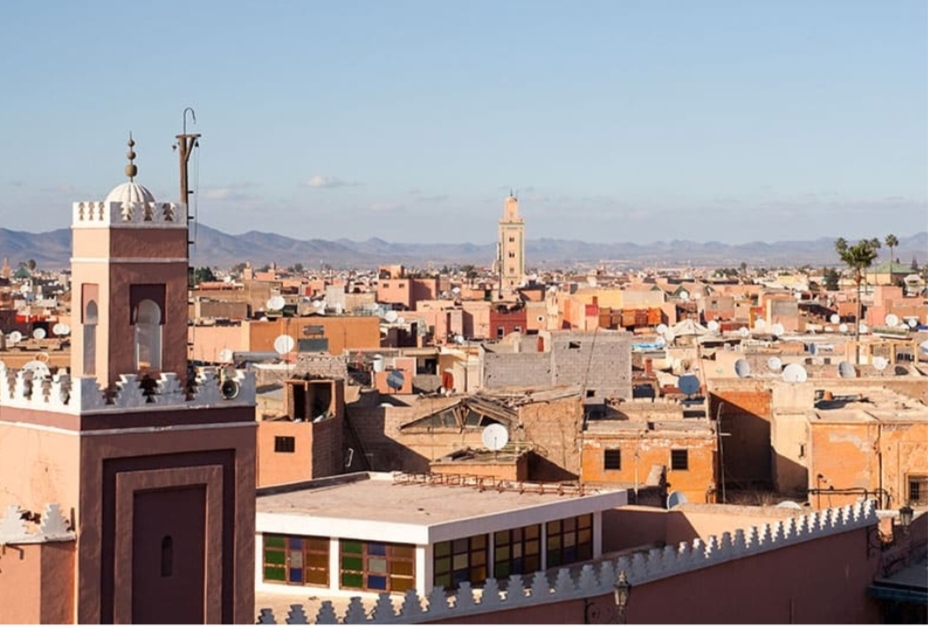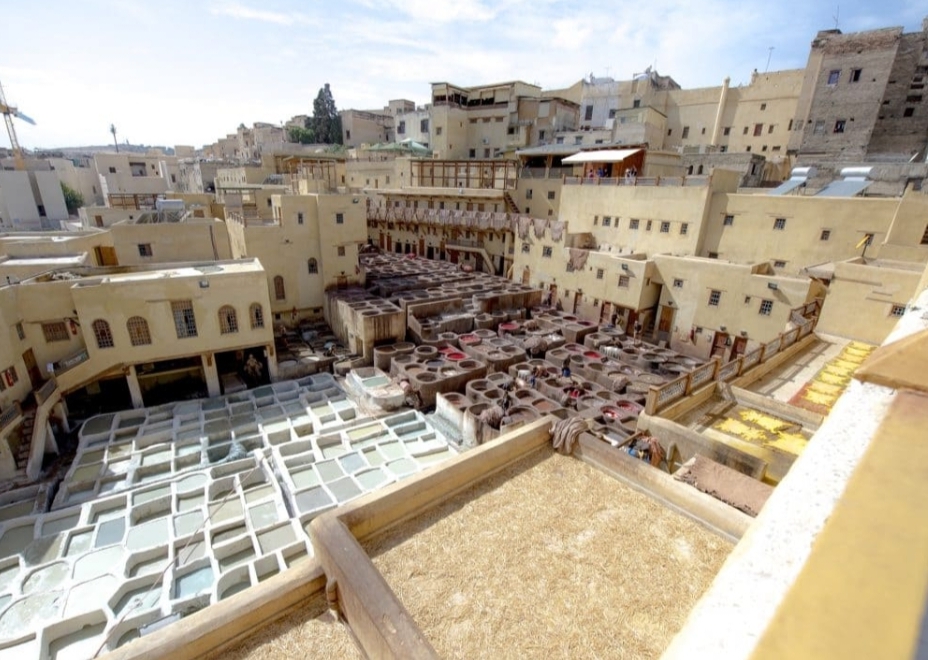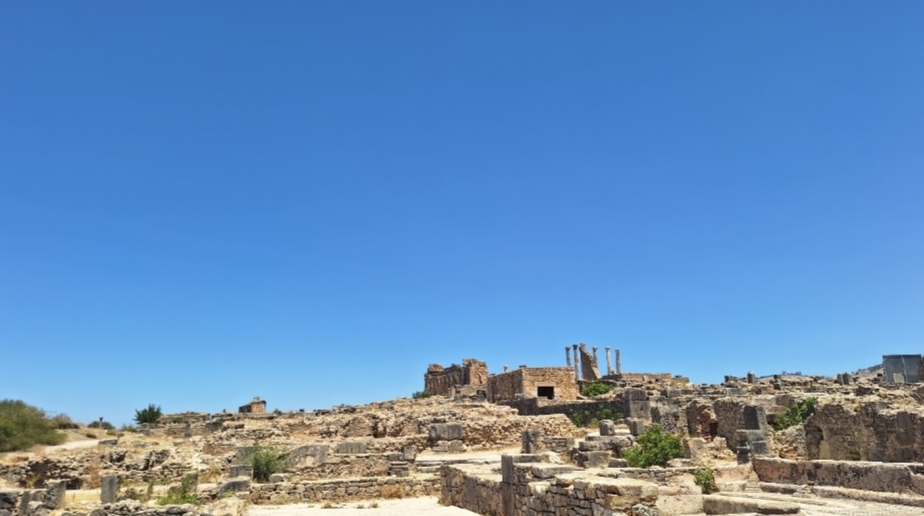Fes (or Fez) is, without a doubt, the most historically rich city in Morocco. With Damascus, Baghdad, Cordoba and Istanbul, it was one of the main cities of the BerBer-Muslim civilisation.
The traces of this rich past are still there: a preserved and authentic medina, many religious monuments, a city still deeply rooted in tradition … Many buildings in the medina of Fes testify to the city’s past grandeur.
The smells, the hustle and bustle, the colours envelop tourists when visiting the city. Fes has numerous UNESCO World Heritage sites, ancient palaces and ancient traditions that make it a very atmospheric place to visit, amidst the sounds of the call to prayer from the hundreds of mosques.
What to see in Fes
The Medina
Medina of Fes, Morocco – Photo by DaysMoroccoTours
The medina of Fez is the old city. In Moroccan dialect, this part of the city is called Fes el Bali. A UNESCO World Heritage Site, the Medina of Fez has remained almost intact since its inception in the late 8th century. The historical heart of the city is the medina, which contains the main historical buildings.
There are hammams, bread ovens, numerous artisans, many mosques, religious schools (madrasa), caravanserais (foundouk in Arabic) and mausoleums (zaouia). Visiting the medina is done exclusively on foot. The medina of Fez is the largest urban and pedestrian area in the world.
The medina of Fes is surrounded by a 15 km long wall. Enter through the upper part of the market, from what is famously known as Bab Boujaloud thanks to the huge and beautiful gate to the old town. All the streets have names, but they are not used, so it is not recommended to enter the streets without a guide.

Madrasa Bou Inania – one of the best things to see in Fes
One of Morocco’s most famous madrasas, which after 10 years of renovation work is now able to be visited by all and allows visitors to admire the fine art and traditional designs so famous in the Moorish style.
Al- Qarawiyin Mosque and University
Situated in the captivating maze of the medina, the Al- Qarawiyyin Mosque and University sits at the bottom of the steep hill from Bab Boujaloud. For over 1,200 years, Al- Qarawiyyin has been a spiritual and educational centre of the Muslim world and was one of the most distinguished universities of the medieval period.
Today it functions as a mosque, a spectacular piece of architecture, the view of which can be admired by non-Muslims from the surrounding restaurants, and by Muslims from inside.
Its library, restored in recent years, houses a collection of 4,000 rare books and ancient Arabic manuscripts written by famous scholars from the region. UNESCO has named it as the oldest university in the world, so it is certainly worth a visit.
Tanneries
Tanneries in Fes, Morocco – Photo by Days Morocco Tours
It is advisable to go with a registered guide rather than casual passers-by, but it is certainly worth a visit. Fes is famous for its clothing and textiles and the tannery is a demonstration of where it all comes from.
With a strong smell and intriguing colourful sights, the tannery tells the story of the creation of everything from bags to clothes, and even bags. Afterwards, you will no doubt be shown a variety of products created by this tannery and its wonderful resources.

Mellah (Jewish Quarter)
Mellah is another important place to see in and around Fes, famous for its shops as well as its history is the Jewish quarter of Fes. With a different style of architecture from the old medina, the Mellah is a great sign of the once vibrant history of Judaism in the city.
Home to the gold market and some of the best antique furniture shops, the Jewish quarter is tucked away near the gates of the Royal Palace. A great place to find strange, unusual and often very old treasures, the Mellah is a great alternative to the old shops in the medina.
Shopping aside, this part of town is also home to a beautiful synagogue with a collection of objects depicting Moroccan Jewish life, as well as a Jewish cemetery.
Mount Zalagh
This is the largest mountain overlooking Fes. Take a little daring hike up the mountain to admire the true scale and beauty of the city. Fes is a huge city, but its size cannot be appreciated from the inside. Only from the top of Mount Zalagh can you really see how big this historic city is.
The Jnan Sbil Gardens and the Batha Museum
These two fantastic places are located ten minutes’ walk from each other and are a recommended combination to see in Fes.
The Dar Batha Museum is a beautiful Andalusian-style riad built in the late 19th century by Sultan Moulay Hassan I. Previously used for visiting royalty in Fes, nowadays it is a museum of impressive artefacts, from clothes to ceramics. It is very easy to reach and excellent for learning a little about the history of the city.
A short walk from the museum, the Jnan Sbil gardens are a beautiful place to relax: a serene lake and orange, lemon and pomegranate trees adorn this oasis of peace in the heart of a big city. They were once used as imperial gardens and were opened to the public in the 20th century.
What to see in Fes: the surroundings, Meknes and Volubilis
Volubilis Ruins: photo by Days Morocco Tours
Volubilis
Volubilis is a unique site in Morocco that is well worth a visit. Volubilis is a Roman archaeological site, quite extensive and very interesting with superb surrounding landscapes.
Meknes:
Finally, The Bab El-Mansour gate in El Hedim square in Meknes, Morocco – Photo by Istock
The city of Meknes, located about 60 km from Fez, can be reached by train in half an hour. You can visit its medina, which is very quiet compared to Fes. but very charming. You can climb to the roof of the madrasa and enjoy a magnificent view of the city.
El Hedim Square is the entrance to the medina. Bab Mansour is the city’s largest gate. Don’t miss the mausoleum of Moulay Ismaïl, which, unlike the mausoleums in Fes, is also open to non-Muslim travellers.
Both of these destinations can be visited on an organised 1-day tour departing from Fes.

